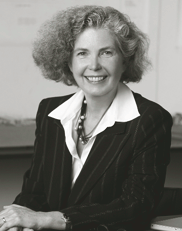Sherida Paulsen, midway through her one-year tenure as President of the New York chapter of the American Institute of Architects, talked to CityLand about her career, AIA initiatives, and architecture and planning in general. She brings a wealth of experience to the position. Paulsen has served as a Commissioner and Chair of the Landmarks Preservation Commission and is a principal at PKSB Architects.
A self-described “California girl,” Paulsen attended UC-Berkeley and UCLA before moving to New York, where she has resided for the last 30 years. Paulsen describes her career as a “mixed bag” and believes her flexibility has helped her avoid being typecast. A few of her significant projects include participating in the ongoing renovation of the Claremont Stables on the Upper West Side, guiding the adaptive reuse of Bay City, Michigan’s industrial waterfront, and overseeing the renovation of the Arnold Constable department store on Canal Street.
Landmarks and land use in the City. Paulsen was appointed Landmarks Chair at the end of Mayor Giuliani’s final term, and the Bloomberg administration asked her to stay on in the position. As Landmarks Chair, Paulsen was best known for her focus on commercial and Modernist buildings. Possessed with a strong sense that “New York has some real gems of Modernism,” Paulsen sought to find and protect unusual examples of Modernist architecture of the 1950s, ‘60s, and ‘70s. Paulsen said she sees a different take on preservation issues between the two administrations. For example, the Bloomberg administration has taken a more “holistic” approach and supports designating historic districts and buildings in the outer boroughs, and she noted that current Chair Robert B. Tierney has pursued this approach with good results.
While Paulsen disagrees with the characterization that Landmarks sometimes has an adversarial relationship with architects, she believes the City’s land use regulatory process can be cumbersome. Paulsen looks forward to working with the City Council and land use agencies to streamline this process. She would like to see a system where an applicant with a complex project involving zoning changes, Buildings issues, and Landmarks implications would no longer need to undergo separate reviews by each agency. Paulsen says a joint review process could be a way to preserve applicants’ time and money while still permitting each agency to maintain its review process.
Meeting economic challenges. While the demise of the development boom has led to lean times for architects, Paulsen has tried to confront the economic difficulties head-on. The AIA has started programs that keep young and unemployed architects engaged in the profession, such as finding volunteer opportunities, providing low-cost training, and offering networking opportunities. As a result, membership in the New York Chapter has not fallen, in significant contrast with other chapters nationwide.
In spite of the economic climate, Paulsen says it has been a good time to preside over the AIA. She describes her goals as tripartite: to revisit the organization’s long-range planning, coordinate with other planning and design groups in the City, and promote design literacy. Regarding the last, her AIA chapter is partnering with the Glass House and the National Endowment for the Arts to sponsor a symposium this fall for teachers, design professionals, and curators that will explore where and how to improve the public’s awareness of design issues.
Big issues. Paulsen took an inclusive view when asked about the impact of internationally prominent, “star” architects on the City’s architectural context. She noted that New York is a city of neighborhoods, but it is also a city on the global stage, and projects by both local and internationally renowned architects are necessary for the City’s continued health. Paulsen pointed out that “we’ve always made room for the big statement,” such as the Guggenheim Museum, Rockefeller Center, and the Hearst Tower.
Paulsen cited the National September 11 Memorial & Museum at the World Trade Center site as an example of an exciting project on the horizon. She expressed concern, however, about St. Vincent’s hospital development proposal. While she supports the concept, Paulsen believes its scale is something not typically seen in low-rise historic districts.
Paulsen worries about New York maintaining its “edge” in design. She wondered if the City is in danger of falling into “a contextual trap,” where the easiest design route has become imitation. Paulsen believes innovative design must be encouraged in order to maintain the City’s world-class status. — Jesse Denno


